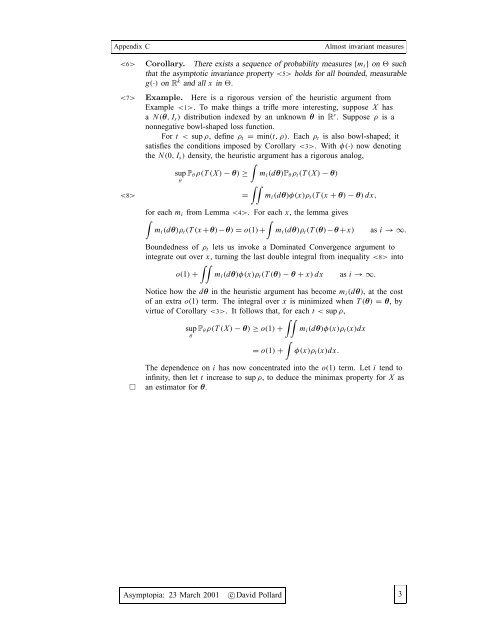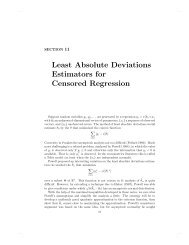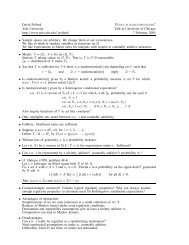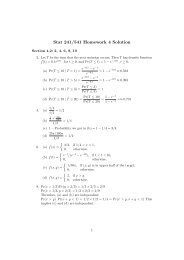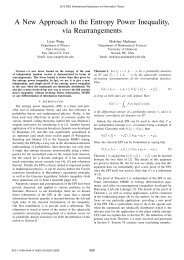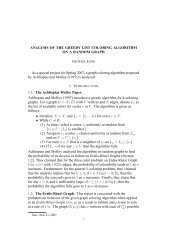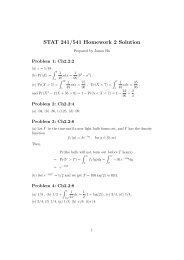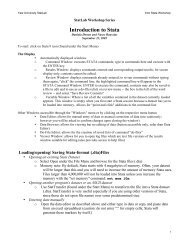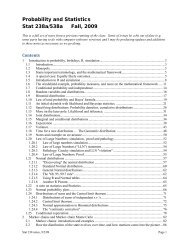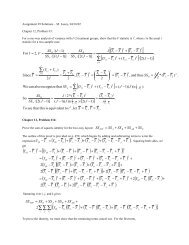Anderson's lemma
Anderson's lemma
Anderson's lemma
Create successful ePaper yourself
Turn your PDF publications into a flip-book with our unique Google optimized e-Paper software.
Appendix CAlmost invariant measures Corollary. There exists a sequence of probability measures {m i } on suchthat the asymptotic invariance property holds for all bounded, measurableg(·) on R k and all x in . Example. Here is a rigorous version of the heuristic argument fromExample . To make things a trifle more interesting, suppose X hasa N(θ, I s ) distribution indexed by an unknown θ in R s . Suppose ρ is anonnegative bowl-shaped loss function.For t < sup ρ, define ρ t = min(t,ρ). Each ρ t is also bowl-shaped; itsatisfies the conditions imposed by Corollary . With φ(·) now denotingthe N(0, I s ) density, the heuristic argument has a rigorous analog,∫sup P θ ρ(T (X) − θ) ≥ m i (dθ)P θ ρ t (T (X) − θ)θ=∫∫m i (dθ)φ(x)ρ t (T (x + θ) − θ) dx,for each m i from Lemma . For each x, the <strong>lemma</strong> gives∫∫m i (dθ)ρ t (T (x +θ)−θ) = o(1)+ m i (dθ)ρ t (T (θ)−θ + x)as i →∞.Boundedness of ρ t lets us invoke a Dominated Convergence argument tointegrate out over x, turning the last double integral from inequality into∫∫o(1) + m i (dθ)φ(x)ρ t (T (θ) − θ + x) dx as i →∞.Notice how the dθ in the heuristic argument has become m i (dθ), at the costof an extra o(1) term. The integral over x is minimized when T (θ) = θ, byvirtue of Corollary . It follows that, for each t < sup ρ,∫∫sup P θ ρ(T (X) − θ) ≥ o(1) + m i (dθ)φ(x)ρ t (x)dxθ∫= o(1) + φ(x)ρ t (x)dx.□The dependence on i has now concentrated into the o(1) term. Let i tend toinfinity, then let t increase to sup ρ, to deduce the minimax property for X asan estimator for θ.Asymptopia: 23 March 2001 c○David Pollard 3


